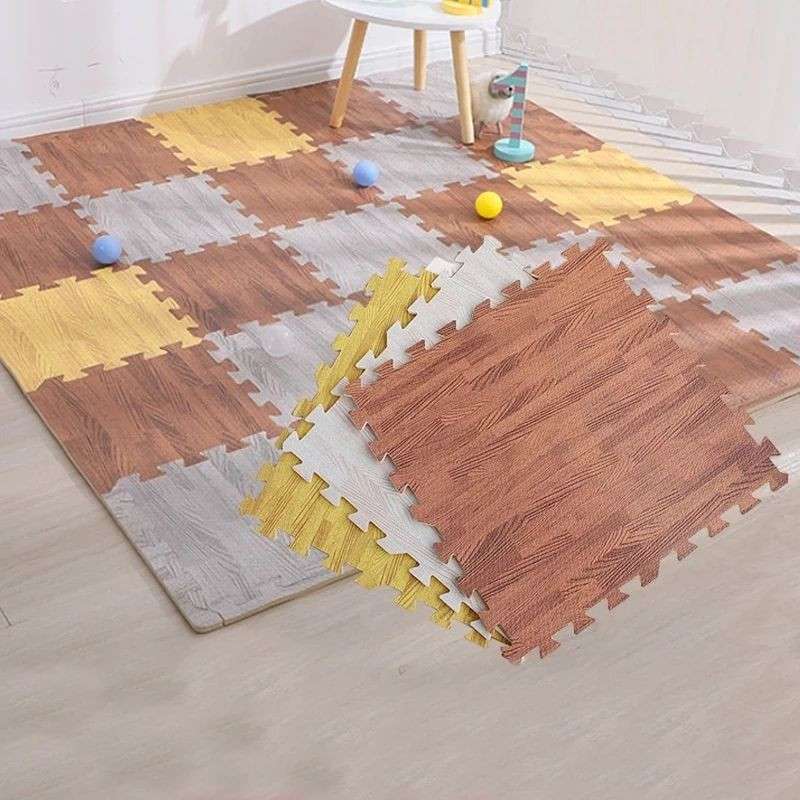-
 sales@fulikaisz.com.cn
sales@fulikaisz.com.cn
-
 13827489472
13827489472
 sales@fulikaisz.com.cn
sales@fulikaisz.com.cn
 13827489472
13827489472

Choosing the right play mat is crucial for creating a safe and playful environment for our little ones. But what age is good for a play mat? Let's explore everything you need to know about selecting the perfect play mat for your child.
Playmats serve as more than just colorful additions to a child's room. They play a crucial role in early childhood development by providing a soft and safe surface for babies and toddlers to explore. These mats offer a cushioned area where children can crawl, roll, sit, and play, aiding in developing motor skills, spatial awareness, and sensory exploration.
Foam Play Mats: These are popular for their softness and cushioning, making them ideal for babies learning to crawl and walk. They often come in interlocking pieces, allowing customization of size and shape.
Activity Gyms: These mats combine play elements like hanging toys, mirrors, and textures to engage babies in interactive play while on their backs.
Interlocking Tiles: These are versatile and can cover large areas. They're great for playrooms and daycare centers, providing a padded surface for various activities.
Rug-Style Mats: These mats resemble traditional rugs but offer added cushioning and safety features, making them suitable for play areas in living rooms or bedrooms.
When choosing a play mat, safety should be a top priority:
Non-Toxic Materials: Ensure that no dangerous chemicals or materials are used in the construction of the mat.
Thickness and Cushioning: Opt for mats with adequate thickness to cushion falls and bumps, especially for younger children.
Slip-Resistant Surface: Look for mats with a non-slip backing or texture to prevent accidental slips and falls during play.
While there's no strict age requirement for introducing a play mat, most experts recommend starting around 4-6 months when babies begin to show interest in exploring their surroundings and start crawling. However, even earlier, some babies may benefit from tummy time on a soft mat.
Early exposure to play mats offers several benefits:
Motor Skills Development: Babies learn to roll, crawl, and eventually walk on these mats, enhancing their gross motor skills.
Sensory Stimulation: Many play mats feature textures, colors, and sounds that stimulate a child's senses, aiding cognitive development.
Safe Play Environment: Play mats create a designated safe space where babies can explore and play without the risk of hard falls or injuries.
Consider the following factors when selecting a play mat:
Size: Choose a mat that fits your space while providing enough room for play activities.
Material: Select materials that are pleasant to the touch, long-lasting, chemical-free, and simple to clean.
Design: If the mat will be used in a common area, select a design that appeals to your child's interests and matches your home decor.
Ease of Cleaning: Opt for mats that are machine washable or easily cleaned to preserve hygienic conditions.
To prolong the life of your play mat and ensure a hygienic play environment:
Regular Cleaning: Wipe the mat with a mild soap and water solution or use baby-safe disinfectant wipes regularly.
Machine Washing: Follow manufacturer instructions if the mat is machine washable.
Sun-Drying: Whenever possible, air out the mat in sunlight to naturally disinfect and freshen it.
While play mats are widespread, here are some alternative options:
Blankets: Soft blankets can create a cozy play area for babies on the floor.
Carpets: Area rugs with cushioning can serve as makeshift play mats in living rooms or playrooms.
Foldable Cushions: These portable cushions provide a padded surface for playtime and can be easily stored when not in use.
What size play mat should I choose?
Consider the available space and intended use. Measure your area to ensure the mat fits comfortably without overcrowding or leaving gaps.
Can play mats be used outdoors?
Some play mats are designed for outdoor use, but check the product specifications for durability and suitability for outdoor environments.
Are play mats machine washable?
Play mats can often be washed in a machine. To preserve the mat's quality, wash and dry it according to the manufacturer's instructions.
Can older children use play mats?
While play mats are designed primarily for babies and toddlers, older children can still benefit from them during activities like yoga, stretching, or playtime with younger siblings.
How long should a play mat last?
The lifespan of a play mat depends on factors like quality, usage, and maintenance. A well-maintained mat from a reputable brand can last several years, providing value for your investment.
The above explanations ought to give parents a thorough grasp of the numerous play mat-related factors and assist them in making selections regarding their child's play environment.